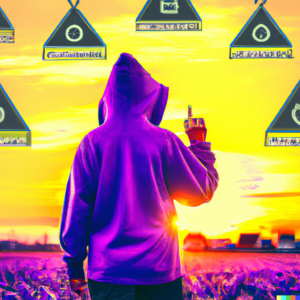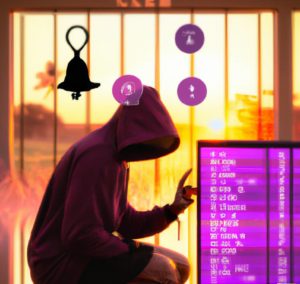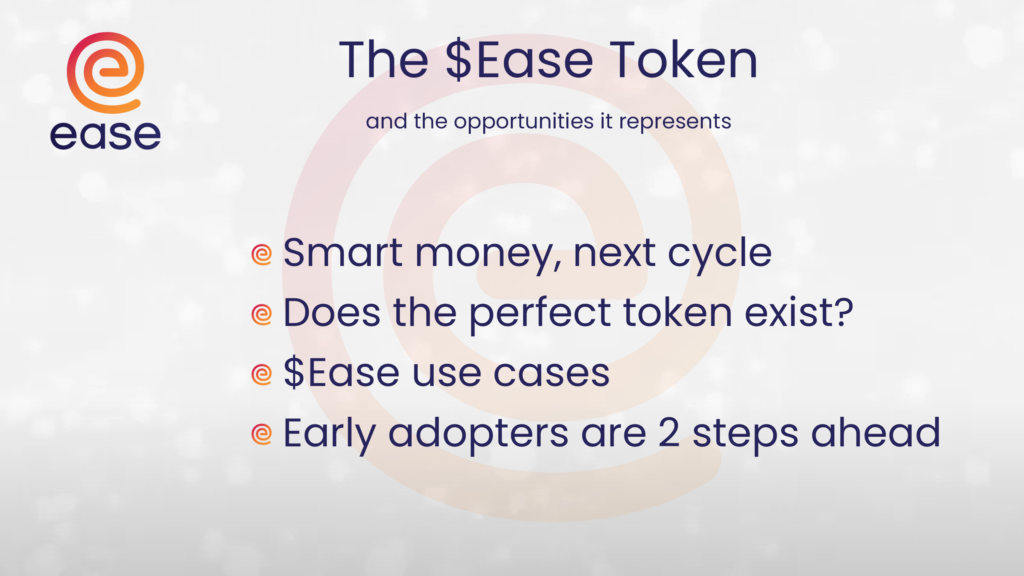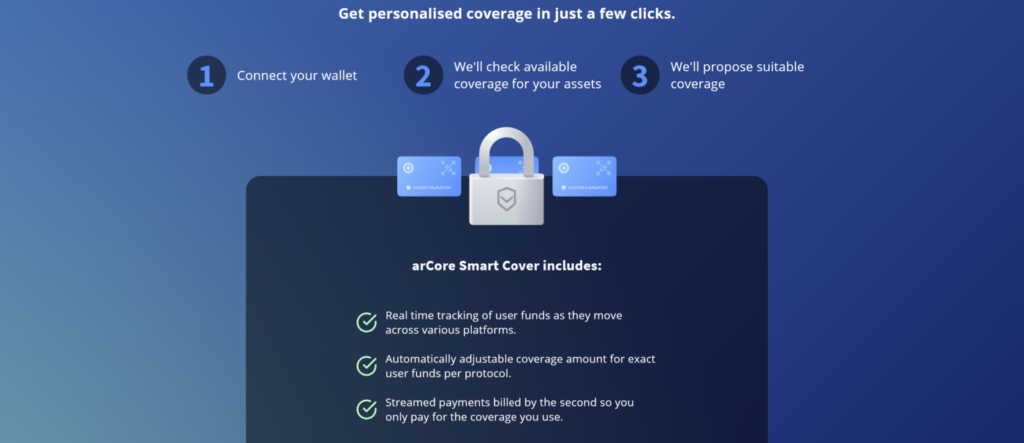Nothing in this educational article is financial advice.
Introduction to the $Ease token: smart money and the next crypto cycle
This deep in the crypto bear market the question of what token or coin to invest in is becoming more and more relevant. We’d like to introduce the $Ease token.
The end of this cycle saw the collapse of inflated ecosystems like Terra, the bankruptcy of Celsius and other major lending platforms and VCs. Most notably, fraudulent centralized actors like FTX were painfully purged from the industry, hopefully making way for healthy growth.
With this amount of leverage gone, smart money -both institutional smart money and savvy retail investors- is now looking for new opportunities to invest in crypto innovations that will flourish in the upcoming crypto cycle.
Ease brings innovation to the boring and undistinguished crypto coverage sector and turns it into an exciting new opportunity!
With this educational article we aim not to give financial advice, but to bring our $Ease token to your attention and to highlight its merits.

Does the perfect token exist?
Many crypto people, especially newcomers, are often guided by dubious beliefs. For example, that TVL is a reliable metric to follow when assessing the worth of a project or coin. We showed the faith in TVL is actually unfounded.
The “hodling” investment strategy has also been popular for many years. But investors begin to realize, pure hodling is a solution only if the right token is chosen.
With the first quantitative tightening since the invention of crypto, investors had to develop an awareness of a lot of new factors – inflation, regulation, and macroeconomics.
As crypto gets more popular the factor of security is now also impossible to neglect.
A perfect investment would be the one that ticks all the boxes:
- It would need to bear the promise of exponential returns, to satisfy the greed of long-term investors.
- It would need to have strong use cases, to ensure its longevity.
- It would have good value to start with, but it would grow exponentially due to the network and flywheel effects of the token or the underlying protocol.
- In an ideal case, it would be worth accumulating and hodling but also allow farming.
- Then it would need to address the problem of inflation and stakers’ profits.
- To top it all off, it would need to offer high security awareness and precautions in case of a hack.
Such perfection sounds impossible. Cue $Ease.

The team at Ease wanted to create the best token to power the innovative ecosystem while being valuable for our community. The team was passionate enough to utilize some of the strongest popular ideas in its creation and make it better than all the rest.
The $Ease token is a micro-cap that’s ahead of the rest

At the time of writing, EaseDeFi is still considered a micro-cap “gem”.
Many crypto investors hunt for these micro- and low-cap gems to invest in, hoping for phenomenal returns later in the market cycle. However, most of those so-called gems are actually high-risk, brand-new projects that may never get traction. They might only give a single opportunity to cash out before dumping to their death.
Previously known as Armor.fi, Ease already has over 2 full years of life and achievements to its name, creating lots of innovation in the field of DeFi coverage.
The project’s experienced Team is noteworthy to have survived a major shakeup, emerging stronger and even more creative from the ordeal.
The $Ease token currently gives you the opportunity to invest in a micro-cap gem, boasting enough historical data of innovation and service provision, and with a creative and battle-tested Team, composed of security and crypto experts.
What is Ease Uninsurance?
Ease.org’s Uninsurance is a DeFi coverage protocol.
Users deposit their yield-bearing DeFi tokens into an Uninsurance vault. In turn, they receive a fully covered ez-Token version of their assets that continue to accrue them the yield associated with the underlying DeFi protocol.
Uninsurance is a free coverage model until a hack event really occurs. In this case, the loss is shared by the ecosystem’s users.
Using the $Ease token, however, users can offset the price they would have to pay, in case an event unfolds. If the affected vault has enough $Ease tokens staked on it, users may even get away unscathed by the hack, paying 0% for the coverage.
The team built an entire ecosystem based on the need for DeFi coverage. As long as there are yield-bearing assets that need to be covered against hacks, there will be demand and use cases for the $Ease token.
One thing is for certain – there will always be hacks in DeFi. The Ease team has already discovered several bugs and possible exploits in even major and proven DeFi protocols.
The $Ease token provides an opportunity to participate in a coverage ecosystem and to capitalize on this huge potential that’s not really tapped yet.
What are the use cases and demand for the $Ease token?
The $Ease token offers three use cases to those who hold it:
- Voting on the Ease DAO
- More direct control over the coverage in the Ease Uninsurance P2P ecosystem
- Farming weekly $Ease rewards in $Ease, by leasing the token’s utility to other users
1: Using the $Ease token to vote
 The $Ease token is different from other voting tokens. It’s inspired by Curve’s veToken model, but turns it on its head!
The $Ease token is different from other voting tokens. It’s inspired by Curve’s veToken model, but turns it on its head!
Depositing the tradeable $Ease in the protocol gives you the untradeable gvEase. “Gv” stands for “growing vote”.
The Ease tokenomics model doesn’t restrict users by locking their investments. gvEase holders are free to withdraw from this opportunity at any moment with just a 7 days waiting period.
Users are incentivized to keep the tokens deposited though: the amount of gvEase linearly increases (grows) with time! Users that leave their $Ease deposited for longer periods of time receive more voting power.
Thus, gvEase achieves three important effects:
- It makes the Ease DAO more resilient to attacks since an attacker must commit a purpose-defeating amount of time before trying a harmful move
- Its steady growth with time discourages centralization as there’s no benefit to building on top of the protocol
- Long-time and committed holders have a bigger influence on DAO proposals
The Ease DAO is a powerful tool that offers deep control over the ecosystem. Holders and protocols alike can use $Ease to vote on:
- their preferred protocols to join the ecosystem
- vault capacities, which manage the ecosystem risk
- changing token emissions or buying them back
- starting to charge fees, profit sharing, etc.
The DAO also accepts or rejects the validity of hack events that concern Uninsurance users. Holding $Ease in order to have a say in this process is of direct interest to every coverage user.
$Ease provides all these benefits while allowing users maximum flexibility.
2: Using the $Ease token for a truly free coverage
By staking gvEase on an Uninsurance vault, users lower the cost of coverage for the assets in that vault in case of a hack. And even protocols themselves can do the same to protect their own users!
 Again, Uninsurance is free while no events are happening: there are no premiums. Only when an event occurs, users will pay exactly what it costs to cover the assets. But gvEase gives users the power to discriminate which vault will pay less to recuperate the loss.
Again, Uninsurance is free while no events are happening: there are no premiums. Only when an event occurs, users will pay exactly what it costs to cover the assets. But gvEase gives users the power to discriminate which vault will pay less to recuperate the loss.
Every user is free to choose which vault to stake their gvEase on. The vault with the most gvEase staked on will pay the least to recuperate the other vaults in an event.
It’s absolutely possible if a vault has enough gvEase staked on it, to be charged 0% for coverage when a hack occurs.
Note that no gvEase is consumed in the process. This means, that simply by depositing enough $Ease, users may not only enjoy truly free coverage for their DeFi assets but also offset the expense it’s due. That’s why it’s so advantageous for DeFi protocols to hold and stake $Ease too.
3: Farming: using the $Ease token to earn money
Token holders can lease their gvEase to other users who need its power to offset coverage costs on the vaults they’re interested in, for a certain period of time.
 This $Ease farming is based on bribes, which are paid by interested users or even by covered protocols themselves. This means, that the value of the farming rewards comes from outside the ecosystem, which avoids inflation and dilution of the token supply.
This $Ease farming is based on bribes, which are paid by interested users or even by covered protocols themselves. This means, that the value of the farming rewards comes from outside the ecosystem, which avoids inflation and dilution of the token supply.
Many DeFi farming protocols create inflation by emitting or even creating additional tokens for rewards. Thus they put DeFi farmers in the uneasy position to undermine their own business every time they produce profits. In contrast to this, the $Ease token has a capped max supply and bribers offering rewards will need to buy $Ease tokens on the market.
The more people that need to borrow gvEase utility, the more rewards $Ease farmers receive. In effect, the tokenomics model offers the benefit of having no inflation, with the compromise of having a harder-to-predict APR%.
The $Ease token is rewarded to users based on the amount of gvEase they lease. But gvEase grows linearly with time after the initial deposition of $Ease (up to double the amount). Thus, users will receive a more significant portion of the rewards the longer they hold their $Ease with the protocol.
Our tokenomics model always incentivizes, never locks assets or restricts flexibility.
Why borrow the $Ease token utility?
An economic way to protect yourself
Borrowing gvEase token utility by bribing existing holders with rewards gives users additional flexibility.
Adverse security events may or may not happen. One of the biggest drawbacks of traditional premium-based insurance models is that most of the time, users pay for coverage without an event taking place. In other words, in almost all cases users pay for a service they didn’t need in the end.
If users think there’s an increased risk for certain protocols at a certain time, they can borrow gvEase utility from holders who already have sizeable positions. That way users have the flexibility to enjoy reduced possible coverage costs on the vaults that interest them.
Protocols can protect their users
Protocols themselves (Aave, CRV, Sushi etc) can actively protect their users by borrowing extra gvEase and staking it on their own vaults. That way, even in a case of a hack, their users might pay nothing or very little.
However, sizeable stacks of gvEase may not be easy to amass in the future. The $Ease token is built to incentivize long-term holding as much as possible.
- The low incentives to sell $Ease,
- coupled with the time required to amass a sizeable gvEase stack,
- together with the capped Max Supply…
…means that borrowing gvEase may someday be the easiest way for most users to apply its utility. In order to obtain gvEase, higher $Ease bribes will need to be posted, which will increase the flywheel effect. If it would be cheaper to buy $Ease off the market and deposit it themselves, rather than borrowing it, then they would do so, increasing the price of $Ease.
You can’t borrow DAO votes!
Note that there is one gvEase utility that can only be used by $Ease depositors. DAO voting can’t be rented. Only actual gvEase hodlers can vote.
Though you can rent gvEase to lower costs in case of a hack, you can not vote with those rented gvEase. So you can’t rent extra votes to pass a proposal.
Early $Ease adopters are 2 steps ahead
 Given the low incentives to sell and high incentives to hold long-term, Ease incentivizes early token adopters the most.
Given the low incentives to sell and high incentives to hold long-term, Ease incentivizes early token adopters the most.
The only real incentive to sell $Ease would be when cashing out rewards from $Ease farming. This way, $Ease liquidity availability is dictated by the natural free market forces and the allure of the token utility.
With all of its usefulness and its powering of an innovative coverage model that strives to be a game-changer in DeFi, $Ease is one of the tokens you don’t want to miss.
Can you make a 1000x on your long-term investment in $Ease? We can’t give financial advice or promises and this explanatory article should not be seen as such.
But the team can promise that they will stay true to themselves and continue doing what they love. The decision to join them in our quest to cover every single dollar in DeFi is up to you.
Nothing in this educational article is financial advice.


